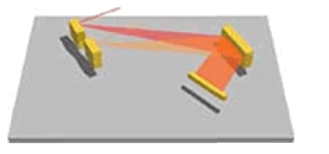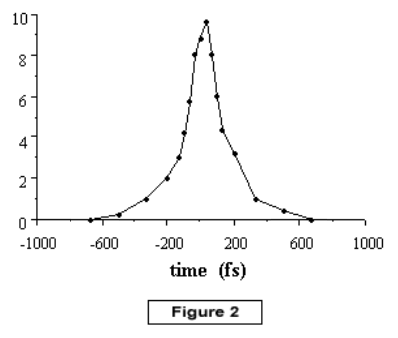- After amplification, the pulses are recompressed in a two-colour compressor.

- The compressor uses three gratings.
- The dual wavelength input beam is incident upon the first grating. The two colours propagate to separate grating and back mirrors
- The compression of either beam can then be independently tuned.
- The beams experience a 35% energy loss propagating through the compressor.

- After recompression, the pulses were both autocorelated and cross correlated for determination of the pulse timing jitter (introduced by various components of the stretcher, amplifier and compressor).
- Assuming they have Gaussian profiles (Figure 2), the widths of the oscillator pulses are 110 and 85fs for 800 and 860nm. After amplification and recompression, the pulse duration are 140 and 150fs respectively.
- High-order dispersion coming from the Ti: Sapphire rod and the mismatch of the grating angles between the compression and stretcher will lead to the lengthening of the pulses.
- We determined that the jitter comes from the propagation throughout the system.
- We also found that the jitter was minimized by reduction of the time separation of the pulses before they propagated to the compressor table. Ideally the compressor should sit on the same table so that the timing jitter is reduced.